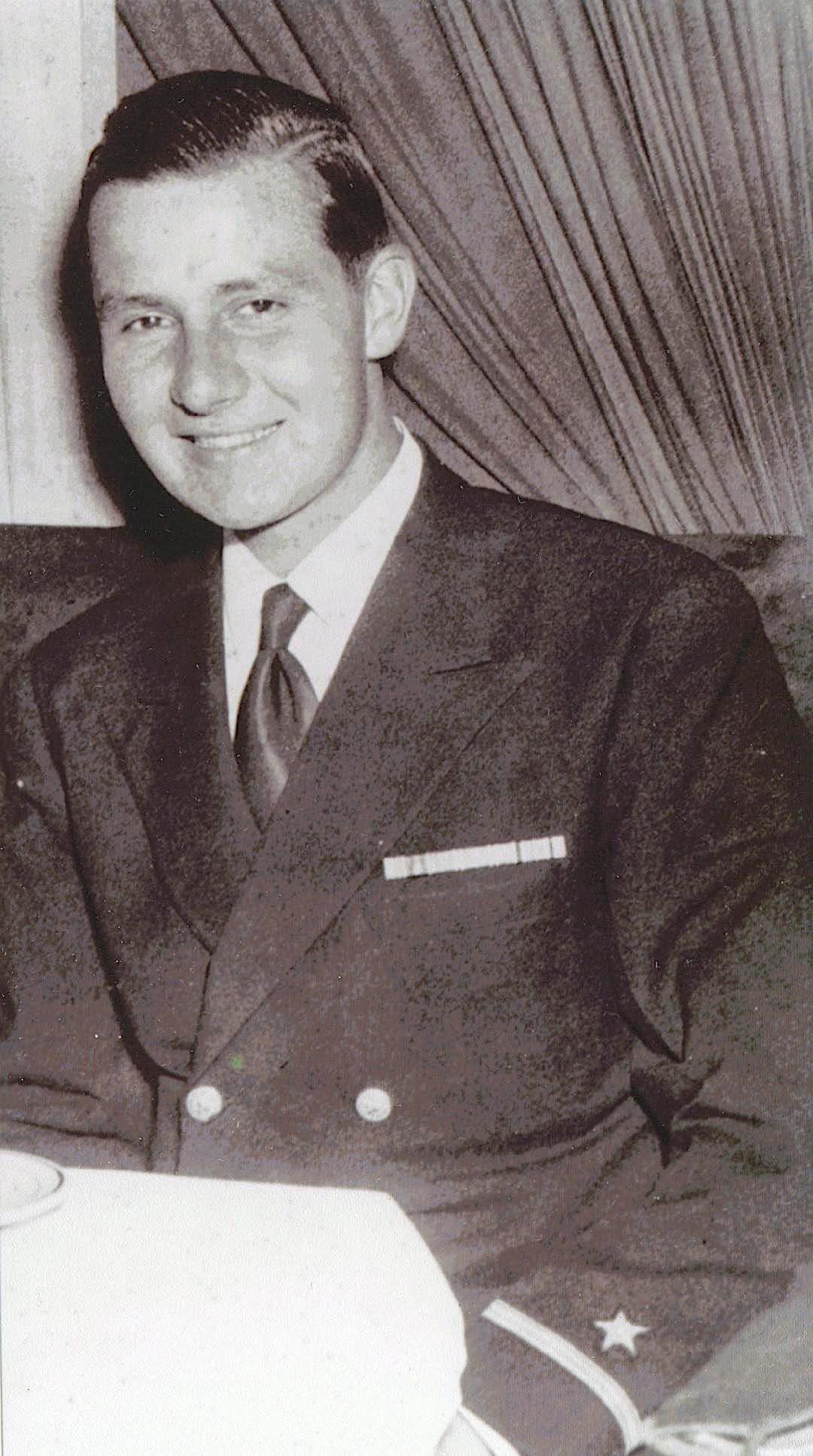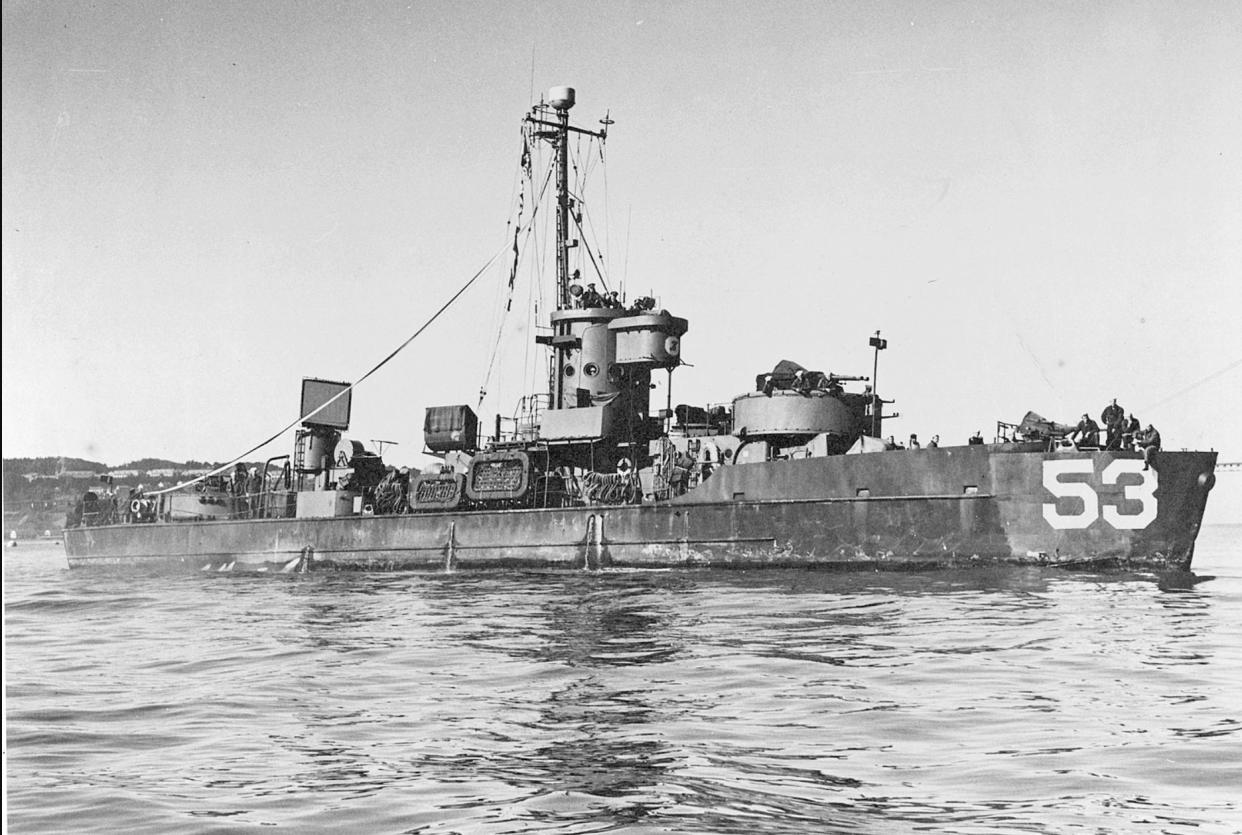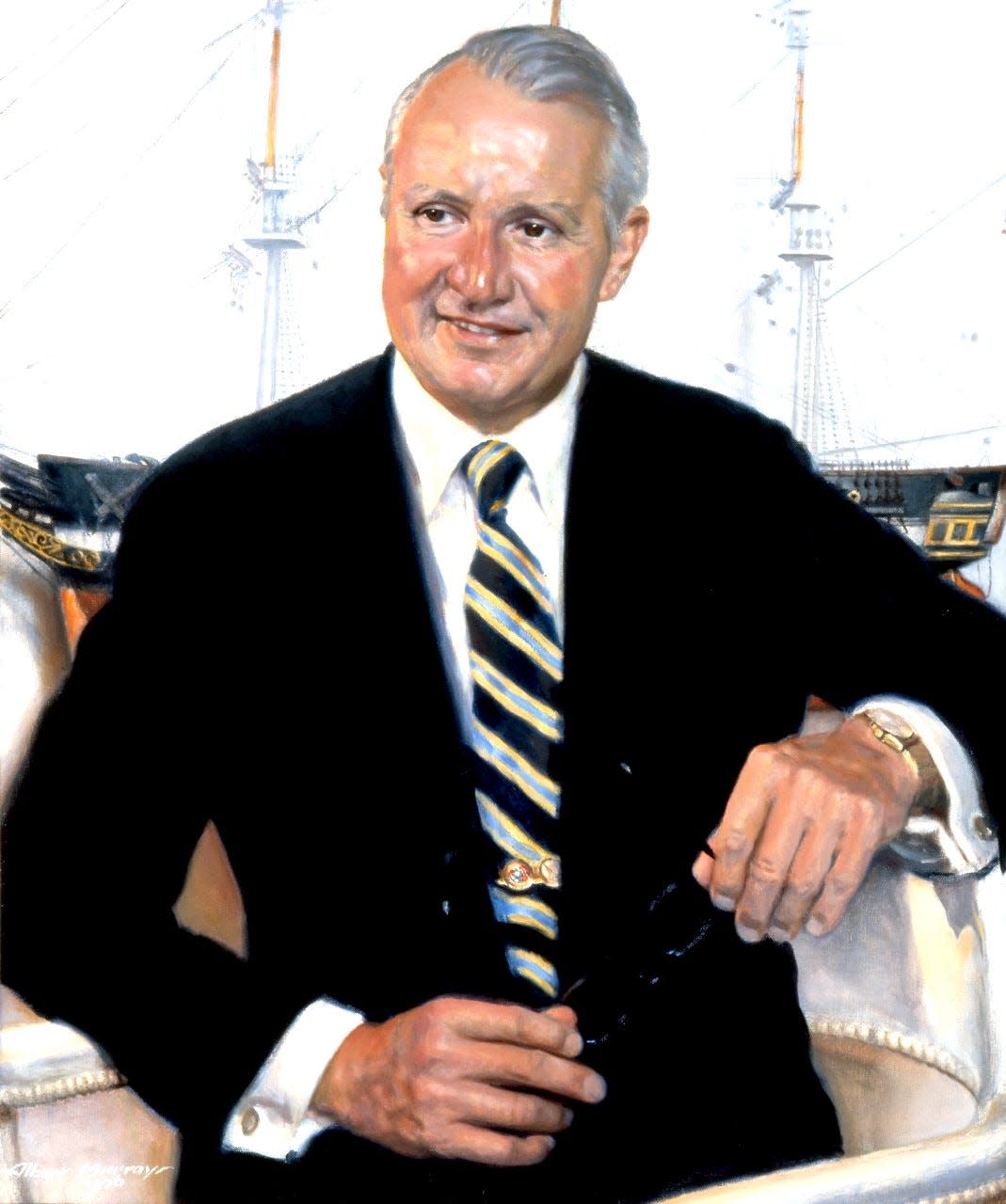From Pearl Harbor to Beijing: Middendorf's journey through major historical events
Most of us probably did not notice that Lou Conter died on April 2 in California. Lou was the last survivor of the sinking of the USS Arizona on Dec. 7, 1941.
The notice gave me pause. There are fewer than a dozen survivors of the Pearl Harbor attack believed to still be alive. The last known Rhode Islander, Frank Emond of Pawtucket, died in January 2023 at the age of 104.
Whenever someone mentions reenactments or living history as a way to bring historical events to life, I am reminded of another kind of “living history.”
I speak of the handful of treasured individuals who provide a first-person link to major historical events. Through this column, it has been my honor and pleasure to speak with several of these people, all 95 or older, and hear eyewitness accounts of events that most of us only read about in history books.
How did your family react when they heard about the attack on Pearl Harbor? Did FDR’s “Fireside Chats” help raise your spirits during World War II? What did a ranting Hitler sound like on the radio? How did you feel about the atomic bombs being dropped on Japan?
The priceless insights of a first-person narrative
Watching a documentary or reading a book is one thing. Listening to someone who lived through those experiences is quite another.
To me, no one epitomizes the “living history” exemplar more than Ambassador Bill Middendorf of Little Compton. Last December, I wrote about a ceremony at the Naval War College at which Navy Secretary Carlos Del Toro presented Bill with a piece of the keel plate of DDG-138, a guided-missile destroyer being named after him.
That honor is seldom bestowed on a living person.

John William Middendorf II will celebrate his 100th birthday on Sept. 22. He was 3 when Charles Lindbergh crossed the Atlantic. As a teenager, he heard Hitler’s demagoguery on the radio, and he was a 17-year-old prep school student when the Japanese attacked Pearl Harbor.
I was reminded again of this man’s remarkable life when I flagged a press release about the Heritage Foundation dedicating the Navy section of its Index of U.S. Military Strength to Middendorf. Heritage is a conservative Washington, D.C., think tank founded in 1973.
Newporter Philip Bilden, a 2017 nominee himself for secretary of the Navy, nominated Middendorf for this dedication.
Bilden, a successful businessman and philanthropist, was motivated to suggest this unprecedented dedication because Middendorf “was one of the most impactful secretaries of the Navy of the last century,” he told me. “A man of many talents … he continues to sound the alarm for U.S national security as he approaches the end of his own century.
“By any measure of his career of service … he deserves to be honored by his fellow Americans.”
So I followed up with a call to the ambassador. We had a wide-ranging conversation, discussing diverse topics such as support for Ukraine, the China military buildup and his new book.
Sounding the alarm
The 2024 Heritage Index evaluates the military’s current posture and its capacity to execute missions.
Sarah Sicard reported in February's Marine Times, “The report’s findings … paint a picture of an aging and understaffed military. ‘The Active Component of the U.S. military is two-thirds the size it should be, operates equipment that is older than it should be, and is burdened by readiness levels that are more problematic than they should be,’ the report reads. ‘To the extent that progress has been made, it has been at the expense of both capacity and modernization.’”
It is perhaps fitting that such a report should include a dedication to Middendorf, who has spent decades as the canary in the coal mine for what he perceived to be one flawed military or foreign policy decision after another.
His lengthy career included 1945 service as a Navy officer in occupied China, several ambassadorships and a stint as secretary of the Navy from 1974 to 1977.
By 21, he was an engineer officer and navigator of LCS(L)(3)-53, a landing craft support ship. These ships were designed to provide support for vulnerable landing craft as they approached a beach.
Naval history websites say these ships provided more firepower per ton than any U.S. Navy ships ever. At the bow was a 3-inch/50-caliber gun, or 40mm guns. The forward and aft deck guns were twin 40s. Ten Mark 7 rocket launchers and four 20mm cannons completed the armament.

Although hostilities had ended by the time Middendorf reached the Pacific, the area was still beset by turmoil. LCS-53 went up the Yangtze River, where he witnessed the plight of the residents of Shanghai.
He also served briefly on the security detail for Gen. George Marshall, who tried to broker peace between Mao Zedong and Chiang Kai-shek. Marshall halted U.S. military support to the Nationalists in 1945-46, a decision that led to Mao’s control of China by 1949.
“Marshall may have been a great general,” Middendorf told me, “But he was a horrible diplomat.”
Gen. Douglas MacArthur agreed, describing Marshall's mistake as the greatest failure in diplomatic history.
What Middendorf learned about China during that time left an indelible mark and helped inform his current fears about the threat China poses.
“In my book ‘The Great Nightfall’ and elsewhere, I argue the Chinese military buildup is the greatest threat we face. It may not be as immediate as Ukraine, but in the long run, China is our greatest menace.”
Middendorf has penned dozens of opinion pieces for The Providence Journal, most of which warn of the China threat. His book "The Great Nightfall: How We Win The New Cold War" (2020), analyzes the threats to America from China and other adversaries.
Aid to Ukraine
A lifelong Republican who served as treasurer of the Republican National Committee during the Goldwater and Nixon days, Middendorf is still an independent thinker who will step away from the party line when he believes it is in our nation’s best interests.
One such issue is ongoing support for Ukraine. While he fully agrees that it is important to secure our own borders, he does not want that issue to interfere with stopping Putin.
“We are spending a small piece of our military budget on Ukraine,” he said. “If we had to confront the Russians directly, it would take up our entire military budget.”
To say nothing of the potential human toll.
Why not fund the Ukrainians to fight that battle now, rather than fighting it ourselves later?
“If we let Putin take Ukraine, he would move on to neighboring countries, triggering conflict between us anyway,” he said.
Middendorf firmly believes in learning from history. He recalls 1938, when Neville Chamberlain persuaded the Allies to let Hitler have the Sudetenland, a German-speaking part of Czechoslovakia, after Hitler promised that he had no further territorial ambitions.
“I remember that vividly,” Middendorf told me. “Chamberlain thought he had bought more time for Britain to prepare by appeasing Hitler.”
Look how that turned out.
What is Middendorf's new book about?
Middendorf’s latest book, another collaboration with confidant and co-author Ken Dooley, is titled, “On My 100-Year Watch.”
Due to be published later this year, it describes five common denominators in the communist takeovers of Russia and four other countries (plus one Islamic revolution).
In each case, Middendorf was intimately involved, starting in China in 1945. He also covers Castro in Cuba, Chavez in Venezuela, Ortega in Nicaragua and Khomeini in Iran.

One of the more fascinating chapters describes Middendorf’s role in drafting a new constitution for the Russian Federation in 1991.
“I was part of a group President Yeltsin invited to Russia to help write a new constitution and privatization program,” Middendorf wrote. “I was one of the main architects of this particular document.”
Inefficient government-owned small businesses gave way to hundreds of thousands of Russian entrepreneurs, who were allowed, for the first time, to deal directly with the public.
Unfortunately, the Russian Parliament excluded major, critical industries, such as coal, iron, steel and energy from privatization. They fell under the control of Communist leaders, oligarchs later beholden to Putin.
“'Private,' in this case, meant in their pockets,” Middendorf continued. “Many of the Communists moved from being powerful but poor to being powerful and rich. Some of them are billionaires today.”
My kind of living history.
This article originally appeared on The Providence Journal: Century of service: Ambassador Middendorf's insights on global threats
